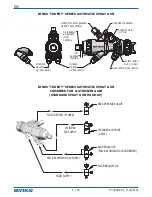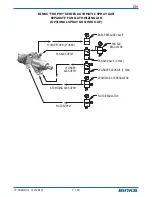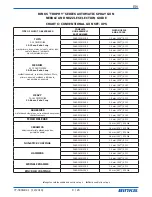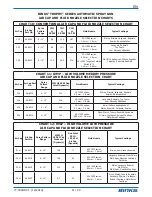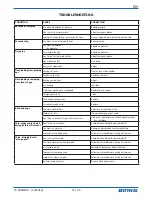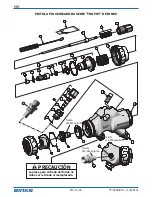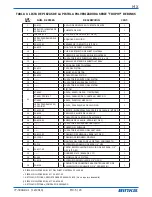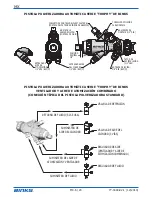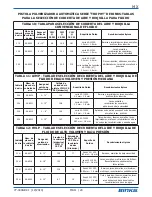
77-3049-R2.1 (12/2014)
17 / 20
EN
TROUBLESHOOTING
CONDITION
CAUSE
CORRECTION
Excessive overspray
Too much atomization air pressure.
Reduce pressure.
Gun too far from work surface.
Adjust to proper distance.
Improper stroking (arcing, gun motion too fast).
Move at moderate pace, parallel to work surface.
Excessive fog
Too much or too fast-drying thinner.
Remix properly.
Too much atomization
(air pressure.)
Reduce air pressure.
Dry spray
Air pressure too high.
Reduce air pressure.
Gun tip too far from work surface.
Adjust to proper distance.
Gun motion too fast.
Slow down.
Gun out of adjustment.
Adjust.
Fluid leaking from packing
nut
Packing nut loose.
Tighten, do not bind needle.
Packing worn or dry.
Replace or lubricate.
Fluid leaking or dripping
from front of gun
Packing nut too tight.
Adjust.
Dry packing.
Lubricate.
Fluid tip or needle worn or damaged.
Replace tip and needle.
Foreign matter in tip.
Clean.
Fluid needle spring broken.
Replace.
Wrong size needle or tip.
Replace.
Runs and sags
Too much material flow.
Adjust gun or reduce fluid flow.
Material too thin.
Mix properly or apply light coats.
Gun tilted on an angle, or gun motion too slow.
Hold gun at right angle to work and adapt to proper
gun technique.
Thin, sandy coarse finish
drying before it flows out
Gun too far from surface.
Check distance. Normally approximately 8".
Too much air pressure.
Reduce air pressure and check spray pattern.
Improper thinner being used.
Follow paint manufacturer’s mixing instructions.
Thick, dimpled finish
"orange peel"
Gun too close to surface.
Check distance. Normally approximately 8".
Too much material coarsely atomized.
Follow paint manufacturer’s mixing instructions.
Air pressure too low.
Increase air pressure or reduce fluid flow.
Improper thinner being used.
Follow paint manufacturer’s mixing instructions.
Material not properly mixed.
Follow paint manufacturer’s mixing instructions.
Surface rough, oily, dirty.
Properly clean and prepare.




